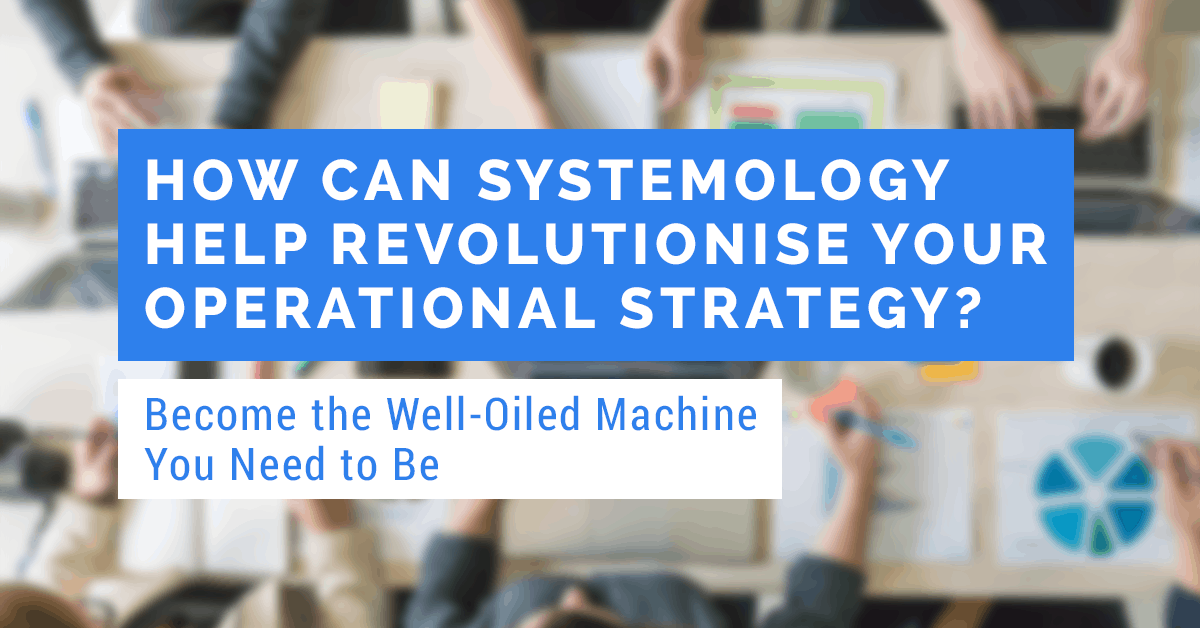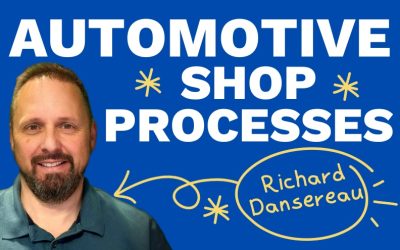
It’s pretty easy to look at a problem and to think it can be solved in one swift movement. There are problems like that out there, of course, but when it comes to rethinking company strategy, you’re going to need to take things one step at a time.
SYSTEMology® is all about breaking your existing system down, piece by piece, and building it back up again. Building it back up to become a faster, more effective, more reliable chain that you and your team can rely on. SYSTEMology® is not just a process where we look at the start and end points. We’ve designed a strategy that allows firms to think about all their working parts. The end result of any project is, after all, the sum of an incredible amount of talent and hard work.
Surely it makes sense to harness this talent and to make sure all your working parts are, well, working? But where on earth do you start? Here’s what you need to know to have a successful system using the SYSTEMology process.
Breaking it All Down
As with any major problem, it makes sense to break things down. Our step-by-step program, through SYSTEMology, allows you to take control of each facet of your operation. To fine-tune the efficient and productive running of any system, you’re going to need to take it apart. You’re then going to need to take a look at it in fine detail and put everything back together again.
Don’t panic! That should not ever be a complicated process. We’ve put SYSTEMology® together to help you usher in new systems and processes with ease. It’s a seven-step program, and it’s one we’re about to explore in a little more detail below.

The seven steps we’re going to go through. The first one is to Define. The myth here is that you’re going to need a lot of systems and there’s probably some space in your workbook if you want to scribble notes as we go. The myth here for step one is that you’re going to need hundreds of systems to systemise your business and then that becomes a tall order in your mind. You don’t know where to start. There’s a little bit of overwhelm. I’m going to show you, in the Define stage, how to identify the 10 to 15 mission-critical systems that when you document will give you that space. You’ll start to see how your business can run without you and that’s what we go through in that first stage.
There’s a thing I call the critical client flow, the CCF and we’ll work you through how to identify that product or service in your business from start to finish. What are the systems that are required for the delivery of the product or service?

Step number two is we’re going to have a look at the Assign phase. Now the Assign phase busts the myth that it needs to be the business owner when doing your systems and processes. Typically speaking, the business owner is the worst person in the organisation to be doing the systems and the processes. That is strange because a lot of business owners come here and they think they have to be the ones to put these systems in place.
But that’s what limits you from actually getting the systems done. You’re busy enough as it is. Systems are important; they’re not urgent. So it always goes on the back burner, and you never get it done. So we actually need to find a way to get it off your plate, assign it to someone else and that’s when you’ll actually get a little bit of traction. So I’m going to show you how to then, once we’ve identified the systems within your business, how to assign them to team members and how to lead them to document it for you.

Then we’re going to look at the Extraction phase. This busts the myth that to document systems and processes is time-consuming. Everybody’s too busy. Even your staff is too busy. You want to have systems done. You’ve read the E-Myth. You go around to your team and say, I want you to document everything that you’re doing in your job. I want you to do this, this, this and this and then you get frustrated when they get busy with the day to day’s as well as you do, and you don’t find enough space to do it.
There are a better way and an insight that I had where the Extraction phase is actually a two-person job. You’ve got the extractor, and then you’ve got a knowledgeable worker because everybody loves to edit. Nobody likes to start with a blank page. So if we can get it pretty far along, get it right back to the right person, then it’ll be much easier to move through your systems.

Then we move into the Organise phase. So I’m going to kind of handle that morning bit, and there’s the itinerary you can check. Then we’ll have Simon Kelly. Come on Simon. He was one of the first SYSTEMology® clients to go through, and I personally coached him. He’s going to show you the tools. He’s going to show you the practical application.
You’ll see the way where he’s storing his systems. You’ll see his project management. He’ll talk you through the different types of systems that you need to be capturing, talk you through which systems you should be doing as a business owner versus which ones must be delegated. So he’ll walk you through that.

Then we’ll bring on Melissa from Melbourne SEO Services. She’ll talk about the Integration. At this point, you’ve identified the systems, you’ve gone through, you’ve extracted it, you documented it, and this busts the myth that your team isn’t going to follow systems and processes. That’s a common one. People go, even if I had these systems and processes in place, they ’re not going to follow it anyway, so why do I even bother?
Melissa will show you the way to get buy-in from the staff, how to understand their personalities and then how to get them following the systems and the processes and show you the way that we did. Also after that, I’m going to jump up with her, and we’ll talk a little bit about the sort of the tussle that her and I have as a business owner and CEO, where we kind of butt heads. We ’ll see what works, what doesn’t, how we figure out and talk through those challenges because you will end up having those challenges.

Then, the sixth step is Scale. At this point, you ’ve now got all the critical things in place. What are the missing pieces required for scale? There are specific systems and processes I’m going to show you how to identify, how to deliver your products and services. But you also need to recognise, how are you going to find great staff, how you’re going to onboard them? What are some of the finance type systems? We just have to figure out what the missing systems are that are required for scale.
Now to do that, I’m going to get mixed up. Nick would be my biggest influence as a business person. I’ve known him for well over 10-years, an incredibly sharp thinker. He only thinks in terms of scale, and he’s been in businesses and bought and sold companies in the hundreds of millions of dollars. So he knows how scale actually works. He’ll take you through some real key distinctions to bust the myth that systems reduce creativity as I did earlier on today. Systems don’t reduce creativity, do they? They do the opposite. He’ll talk about how to do that.

Then the final phase I’ll come back on and talk about Optimisation. Everybody does this too early. This is the last step. Most people try and perfect the systems right up front, and they try and get it just right, and then it stops them doing it. It becomes a mental roadblock. You think it has to be done to a certain standard. You just have to get it done and out, and you’ll improve it and optimise it as you go. So when we actually go through the Capture and Extraction phase, we’re not trying to improve the process. Yes, some minor improvements will happen, but the whole goal here really is to capture what is done, and we’ll optimise a little bit later.
If you try and optimise too early, you end up stunting your growth.
One Step at a Time
Putting fantastic, practical systems in place shouldn’t ever be a chore, nor should it be taxing. SYSTEMology® helps to break down the way you organise your systems into manageable chunks. Think of your enterprise as one big machine. You’re going to want to make sure every part works well, and that they work well together. It’s all about achieving great synergy and co-operation without overcomplicating matters.
Our model has worked wonders for many different brands over the years. We’re always pleased to be able to offer it to new and invested bodies – it’s a universal roadmap. It applies to you whether you are creating an entirely new system map or are rejuvenating your existing model. Regardless of the work you do, SYSTEMology® is here to keep all your cogs oiled and working at pace.
Come Talk to Us
If you do have any questions about







